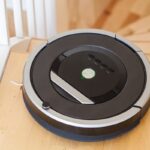Cleaning a microwave is essential for hygiene and convenience. Nobody wants to taste yesterday’s leftovers in today’s food. Bleach is popular in many homes as an all-purpose cleaner, but can you use it to clean a microwave?
You can clean a microwave with bleach, but it is very unsafe and usually unnecessary. The heat from the microwave typically is enough to kill most bacteria, making bleach redundant.
In this article, I’ll explain why bleach and other chemical cleaning agents are such poor cleaning methods for microwaves and what you should use instead.

Can You Clean a Microwave With Bleach?
Bleach is known for its sterilizing properties, low price, and accessibility, which is why it’s widely used. However, a microwave usually heats up food enough that any extra microbial control bleach adds would be unnecessary at best.
A greater problem is the potential for bleach to be very dangerous under the right conditions.
Most bleach brands contain hypochlorite, which is an inorganic chemical compound of hydrogen, oxygen, and chlorine. While the first two are relatively harmless, chlorine is extremely dangerous, especially in large quantities.
Chlorine is primarily an irritant and will irritate your nose, eyes, and lungs. In large enough quantities, it can even be deadly when inhaled.
In addition to being toxic, it can be explosive in high enough concentrations making it quite dangerous, especially in the kitchen, where you’re likely to have open flames.
So, if it’s this dangerous, why are companies allowed to use it in bleach? There’s a bit more chemistry involved, but the short answer is that compounds are sometimes quite different than the sum of their parts.
For example, chlorine is quite common in many safe compounds and is a major component of table salt. It accounts for more than half of its total molecular weight.
Hypochlorite is also relatively safe for cleaning, provided you do not heat it. Heat breaks up the chemical bonds that keep each element (hydrogen, oxygen, and chlorine) together and allows chlorine to act on its own.
This is why adding bleach to your microwave, which is essentially a heat generator, is not the best idea. Bleach may be ideal for cleaning other places like toilets, sinks, and floors, but it’s highly unsuitable for microwaves.
Although using bleach isn’t the cleaning method you should resort to, that doesn’t mean you should completely skip cleaning your microwave. Sticking to cleaning agents you probably already have at home, such as lemon, baking soda, and white vinegar, should do the trick.
If you’re wondering whether the dishes you use for eating are safe to be cleaned with bleach, check out Can You Wash Dishes With Bleach?
What Should You Not Clean a Microwave With?
You shouldn’t clean a microwave with bleach, steel wool, harsh cleaning agents, and any cleaning products explicitly made for specific surfaces like glass and toilets. Instead, you should stick to mild cleaning agents like white vinegar or dish soap.
Harsher materials such as metal foil and steel wool can cause irreparable damage to your microwave by scratching it. As a result, it’s a much better option to resort to softer materials like paper towels.
Antibacterial wipes are also a good option for excess dirt and grease. If you don’t have antibacterial wipes at home, a simple cotton cloth cut from an old shirt and dipped in water should do the trick without ruining your microwave.
Is It OK To Clean Microwave With Chemicals?
It’s fine to clean a microwave with chemicals, but they should be gentle and food safe. Harsher chemicals like bleach can cause health problems, so it’s best to use milder options like white vinegar and baking soda.
The easiest option is to use a pre-made cleaning agent. However, some chemicals found in cleaning agents, like bleach, are too harsh for cleaning your microwave. Still, you should be fine using these products to clean the outside of the microwave. It’s the interior that you should be extra careful with.
When you’re done, always remember to wipe the microwave with a clean cloth to get rid of any residue.
Can I Clean Microwave With Clorox?
You can clean a microwave with Clorox, but it could be a health hazard. Clorox contains sodium hypochlorite, which releases chlorine when heated to high enough temperatures. Therefore, it’s best to avoid Clorox entirely but if you have no other options, only use it on the exterior of the microwave.
Cleaning can be a tedious process, and most of us just want to get it over with. However, you must know what kind of product you are using and how to use it correctly.
Not only is Clorox too harsh on your microwave surface, but it can also be harsh on your health. Although a study has found that any complications from small amounts of Clorox ingestion were typically not severe, nobody likes an irritated, painful throat.
How Do You Get Stubborn Stains Out of a Microwave?
To get stubborn stains out of a microwave, wipe them down with a mix of white vinegar and water and then turn the microwave on to soften them. Then, wipe the microwave with a damp cloth to remove the softened stains.
If the stains are still too stubborn to clean, make a paste with baking soda and water and use an old toothbrush to gently apply it to the problematic areas.
Final Thoughts
Bleach is one of the last things you should use on your microwave, and even then, it should only be used on its exterior. Instead, opt for safer options like vinegar and baking soda.
A damp cloth is also a simple but effective option. Consistency is the key. Wipe your microwave with a damp cloth after every use, and you’ll rarely ever have to worry about stubborn stains.
But don’t be too hard on yourself, you’re always more than welcome to come back to this article and use one of the ways I showed you to properly clean your microwave.





